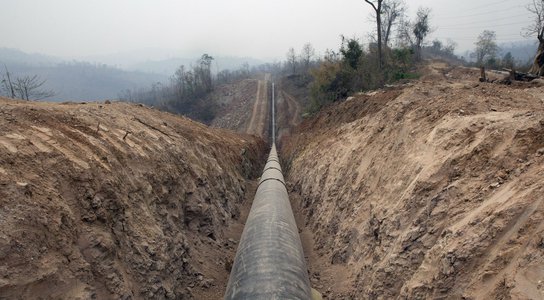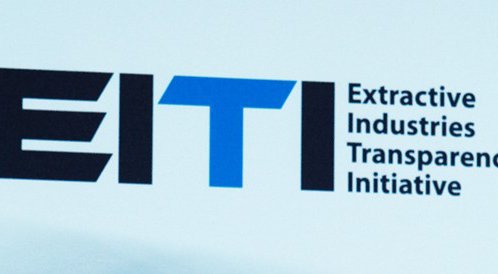Myanmar’s exports of the jade mined in northern Kachin State are estimated to be worth US$6-9 billion per year. But the government’s tax take is paltry and, as today’s New York Times article shows, the people of Kachin see few benefits. So where’s the money? And what can be done to ensure that it goes where it should?
Answering these questions is critical both to the government’s efforts to tackle corruption and the prospects for a lasting peace in Kachin State, the scene of Myanmar’s most serious armed conflict.

Hpakant’s landscape has been shattered by 20 years of industrial jade mining that has enriched military families and their business cronies but done little for the local population. Photo credit: Minzayar
First, the corruption dimension. Since coming to power in 2011 the Thein Sein government has made laudable pledges to clean up its oil, gas and mining industries. In July this year Myanmar became a candidate member of the Extractive Industries Transparency Initiative, the international anti-corruption scheme involving 48 countries. This is a hugely significant step forward, for which the government ministers, Myanmar civil society representatives and companies involved deserve to be congratulated.
But candidacy is just the start. The EITI will only help Myanmar’s people if it’s implemented rapidly, rigorously and in a comprehensive form. The government urgently needs to demonstrate that it will deliver on its promises of greater transparency and target the industries where this can make the greatest difference.
And this is where jade comes in. While most of the discussions so far about EITI in Myanmar have centred on oil and gas, jade is the most valuable of its extractive industries. Setting up an accountable, corruption-free jade business would be the biggest possible win for the reform process. It would dramatically increase the revenues available for development in Kachin State and the country as a whole.

Freelance miners from Kachin and other parts of Myanmar have to pay both the Myanmar military and the KIO as a condition of mining in Hpakant. Photo credit: Minzayar
Jade is also the most significant test of the government’s commitment to real change. Our recent research in Kachin State points to deeply entrenched patterns of secrecy, corruption and military control:
- There is almost no public data on which companies hold mining licences, who those companies’ real owners are, what the terms of their contracts are, what they are paying the government, and what they are producing. The public disclosure of all of these data is either a requirement or a recommendation of the EITI scheme that Myanmar has signed up to. Despite some reports to the contrary, the government has this information, with the possible exception of details on all of the companies’ real owners. It keeps standardised records of licence allocations, mine locations, taxes received and the sales of jade – many of them running into tens of millions of dollars at a time – made by the mining companies at government gems emporiums.
- According to jade business insiders, systemic corruption amongst military and civilian officials facilitates the elaborate smuggling networks that convey much of the jade straight over the border into China.
- The jade mining region of Hpakant has been the scene of on-off fighting between the Myanmar military and theKachin Independence Organisation (KIO) since the 17 year ceasefire between the government and the KIO broke down in June 2011. However, all the major jade mines are controlled by the Myanmar army and locally-based commanders demand a cut of every valuable jade find.
This issue of militarisation brings us on to the second big reason why the Myanmar government urgently needs to address the question of who benefits from the jade. Jade may not be the cause of the conflict between the Myanmar military and the KIO, but it is a significant contributory factor. Many – perhaps most – people in Kachin bitterly resent what they see as the theft of their natural inheritance by the military families, crony tycoons and Chinese businessmen who reportedly control the big jade-mining companies. As one Kachin business leader puts it “the tree is standing in our garden, but we are not allowed to eat the fruit”.
Jade is also locked into Kachin State’s war economy. Myanmar army commanders levy payments from jade miners and so does the KIO. The demands for money from the military officers are a clear case of corruption. For their part, the KIO – and many people in Kachin State – perceive the armed group’s levies on the jade trade as legitimate taxation. Either way, Global Witness research on natural resource-related conflicts elsewhere in the world has repeatedly shown that when war becomes good for business, the prospects for a lasting peace can rapidly diminish.

Jade boulders being loaded for the long journey south to the government emporium in Nay Pyi Taw. Much of the jade dug in Hpakant is smuggled straight over the border into China, however. Photo credit: Minzayar
The Thein Sein government suspended the licenced jade mining companies in May 2012, to stop the KIO taxing them, and then abruptly lifted the ban at the start of September this year. The resumption of large scale mining creates an opportunity for the government to show that it is serious about addressing the corruption and injustice that permeate the jade business. Global Witness is recommending it take the following steps as a priority:
- Publish data about the jade sector in line with EITI requirements and recommendations. This information should include what licences have been allocated to which companies, who really owns these companies, what the terms of their contracts are, what payments the companies are making to the government, and how much jade they are producing.
- Make a public commitment to equitable sharing of Kachin State’s natural resources as part of a comprehensive peace settlement and begin addressing this issue in peace talks with the KIO. Such a settlement should recognise local people’s ownership rights and their role in decision-making concerning management of natural resources.
- Increase protection for civil society organisations working to build accountability in the jade business; notably by instructing local officials and the security services to cease surveillance and lift restrictions on CSOs’ access to mining areas.
In October the Myanmar government hosted, for the first time, a meeting of the EITI International Board and an EITI conference on Natural Resource Governance in Myanmar. During the conference ministers were questioned by participants about how they would include the jade business in EITI. Their response was that peace had to come first and transparency would follow.
Based on what we are seeing in Kachin State, we would urge the government to think again. Clearly there is no neat ‘cause and effect’ relationship between transparency and peace. But if Nay Pyi Taw is to build trust in Kachin State and international confidence in its anti-corruption drive, its proposed sequencing may need to be reversed.
For a more comprehensive display of Minzayar’s stunning photos of Hpakant, hosted and supported by Natural Resource Governance Institute, please follow this link.
Mike Davis is Senior Advisor at Global Witness.


